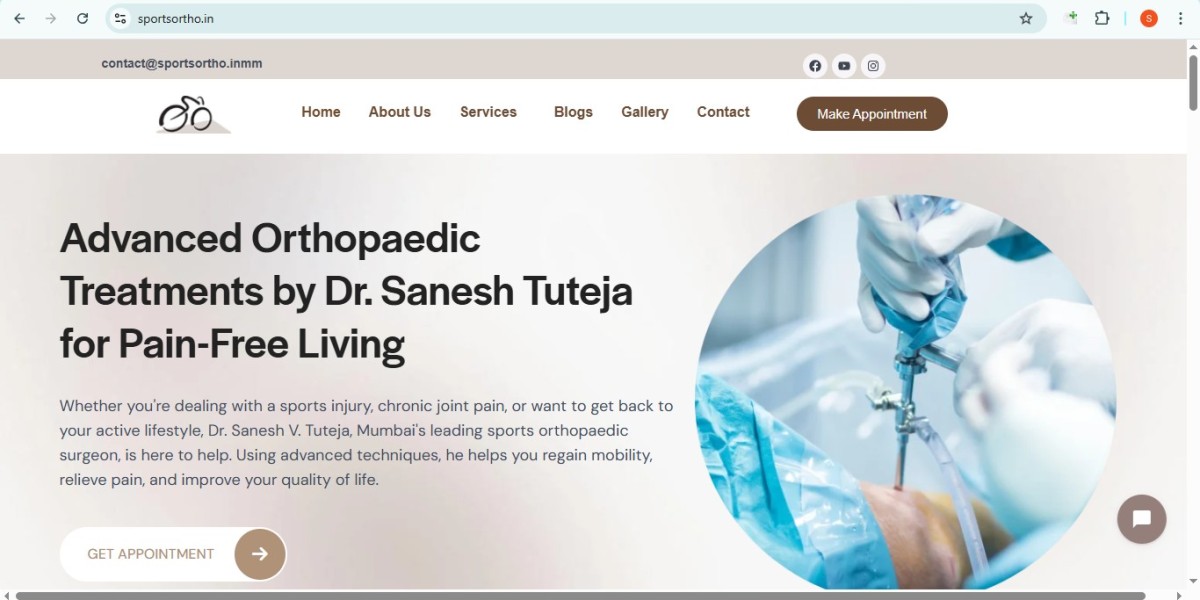Elbow injuries are increasingly common among athletes, manual laborers, and individuals engaged in repetitive arm movements. From ligament tears to joint instability, elbow problems can significantly affect daily activities and sports performance. Modern orthopaedics offers advanced solutions, with minimally invasive elbow surgery becoming the preferred option for many patients. When combined with specialized elbow ligament repair, this approach ensures faster recovery, less pain, and a return to full function.
This article explores the causes of elbow ligament injuries, treatment options, and the advantages of minimally invasive surgical techniques for long-term joint health.
The elbow is stabilized by several ligaments, the most important being:
Ulnar Collateral Ligament (UCL): Crucial for valgus stability, especially in throwing athletes.
Radial Collateral Ligament (RCL): Maintains lateral stability during movement.
Annular Ligament: Supports rotation of the forearm bones.
Ligament injuries can result from:
Sports activities, especially baseball, cricket, javelin, and weightlifting
Falls or trauma
Repetitive overhead or pushing motions
Accidents causing hyperextension or twisting
Symptoms often include pain, swelling, reduced range of motion, and a feeling of instability. Without proper treatment, ligament injuries can lead to chronic pain, reduced strength, and long-term joint degeneration.
When Is Elbow Ligament Repair Necessary?
Not all elbow injuries require surgery. Conservative treatments such as rest, bracing, physiotherapy, and anti-inflammatory medications may be sufficient for mild or partial ligament tears. However, elbow ligament repair is indicated when:
There is a complete ligament tear
Chronic instability persists despite conservative care
Athletes need to return to competitive activity
Pain and functional limitations affect daily life
Recurrent subluxation or dislocation occurs
Surgical intervention restores ligament integrity, stabilizes the joint, and reduces the risk of future injuries.
Minimally Invasive Elbow Surgery: The Modern Approach
Traditional open elbow surgery involves large incisions and significant tissue disruption, often resulting in longer recovery periods. Minimally invasive elbow surgery, commonly performed arthroscopically, uses small incisions and advanced instruments to repair ligaments and other structures inside the joint.
Benefits of Minimally Invasive Elbow Surgery:
Reduced tissue trauma: Smaller incisions mean less damage to surrounding muscles and tendons.
Less postoperative pain: Patients experience lower pain levels compared to open surgery.
Faster recovery: Rehabilitation begins sooner, allowing earlier return to activities.
Minimized scarring: Cosmetic outcomes are improved with tiny incisions.
Precise repair: High-definition cameras allow surgeons to visualize and repair ligaments accurately.
These advantages make minimally invasive techniques ideal for athletes, working professionals, and active individuals who require a rapid and effective recovery.
Elbow Ligament Repair Techniques
Elbow ligament repair can vary depending on the ligament affected and the extent of the injury:
1. Ulnar Collateral Ligament (UCL) Reconstruction
Common in baseball and cricket players, UCL reconstruction (often referred to as “Tommy John Surgery”) replaces the torn ligament with a tendon graft to restore elbow stability.
2. Radial Collateral Ligament (RCL) Repair
Lateral instability due to RCL tears is addressed by reattaching or reconstructing the ligament, often using suture anchors or grafts.
3. Arthroscopic Ligament Repair
Using small incisions and specialized instruments, surgeons can repair partial or complete ligament tears with minimal disruption to surrounding tissues. Arthroscopy also allows the treatment of associated conditions, such as cartilage damage or loose bodies.
4. Capsular Tightening or Plication
For multidirectional instability, the joint capsule can be tightened arthroscopically, providing additional support to the repaired ligaments.
Rehabilitation After Elbow Ligament Repair
Rehabilitation is a critical component of successful elbow ligament repair. A structured physiotherapy program ensures proper healing, restores strength, and prevents reinjury.
Rehabilitation Stages:
Immobilization: The elbow is supported in a brace or splint to protect the repair.
Passive Motion: Gentle exercises maintain mobility without stressing the ligament.
Active Strengthening: Gradual strengthening of forearm, biceps, triceps, and shoulder muscles.
Functional Training: Sport-specific or daily activity exercises to restore confidence and coordination.
Return to Full Activity: Athletes and active individuals gradually resume competitive or high-demand tasks under supervision.
Adhering to the rehab plan ensures the ligament heals properly and the elbow regains optimal function.
Why Choose Minimally Invasive Surgery for Elbow Ligaments?
Patients opting for minimally invasive elbow surgery benefit from:
Shorter hospital stays
Faster return to work or sports
Lower risk of infection and complications
Improved precision in repairing complex ligament injuries
Better long-term joint health and stability
This modern approach is particularly advantageous for athletes and professionals who cannot afford prolonged downtime.
minimally invasive elbow surgery
Elbow ligament injuries can significantly impact athletic performance, professional activity, and daily life. With modern minimally invasive elbow surgery, patients can experience precise, effective elbow ligament repair with faster recovery and better functional outcomes. Early intervention, accurate diagnosis, and structured rehabilitation are key to restoring strength, mobility, and long-term elbow health.
Whether for athletes, manual laborers, or active individuals, minimally invasive techniques offer a reliable path to recovery, allowing patients to regain confidence and return to their full range of activities safely and efficiently.






